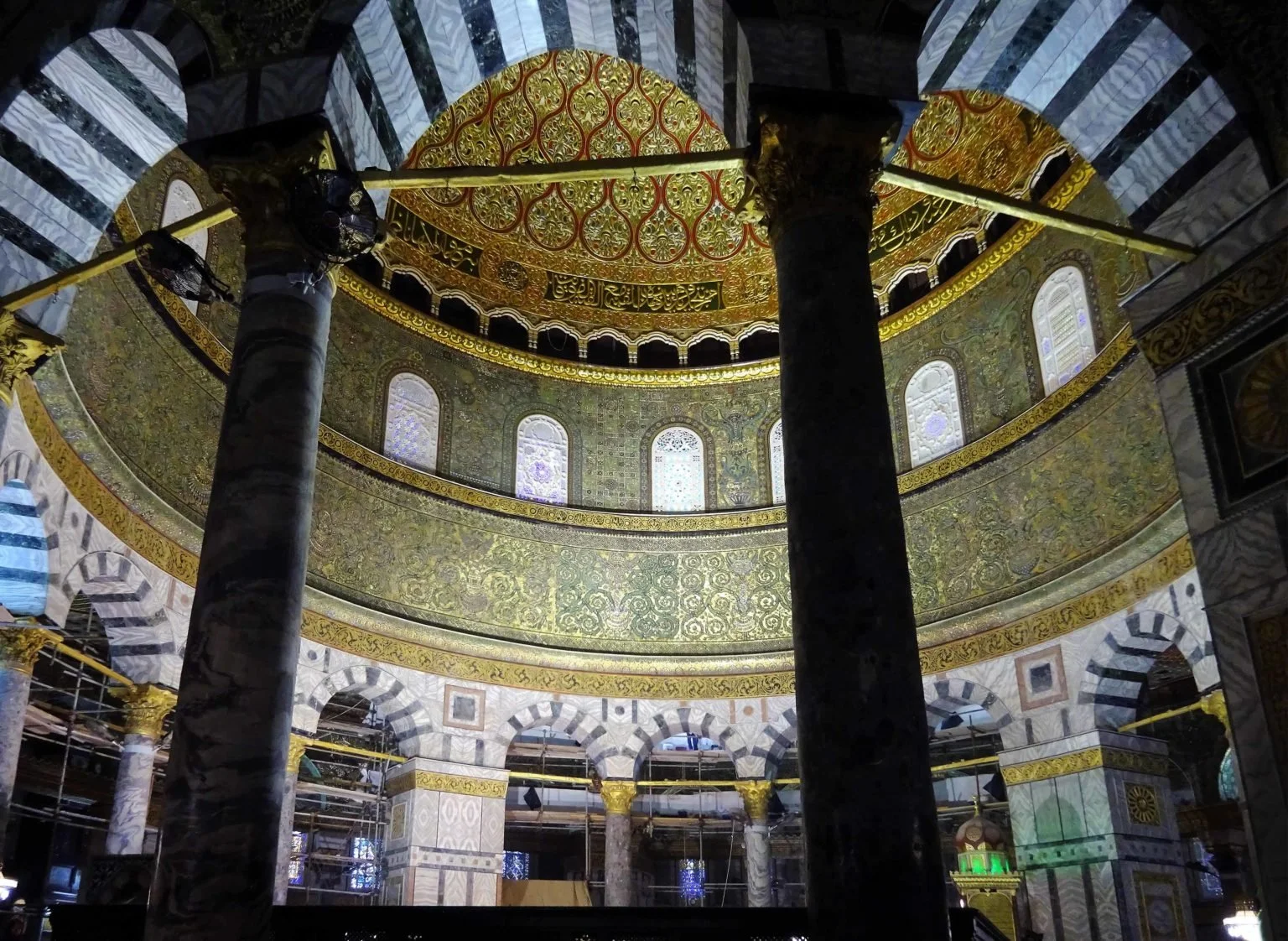Dome of the Rock, Jerusalem
The Dome of the Rock (Qubbat al-Sakhra), 691–92 (Umayyad), stone masonry, wooden roof, decorated with glazed ceramic tile, mosaics, and gilt aluminum and bronze dome, Jerusalem
In the heart of Jerusalem, the iconic silhouette of the Dome of the Rock emerges, casting a golden glow that has come to symbolize the soul of the Middle East. This architectural masterpiece, with its shimmering golden roof and multicolored Turkish tiles, stands as a testament to both the artistic ingenuity of its creators and the rich tapestry of history it weaves.
Constructed by Abd al-Malik, a pivotal Umayyad caliph, the Dome of the Rock is a beacon of religious significance. At a time when the first Arab armies were embroiled in conquests, Abd al-Malik sought to establish a religious focal point for his Muslim supporters. Uniquely adorned with a golden dome and vibrant tiles, this structure became a visual marvel, setting it apart in a league of its own.
Situated on the expansive platform of Haram al-Sharif, the Dome of the Rock shares sacred ground with Al-Aqsa Mosque and other religious edifices. This platform, resonating with profound religious importance for Muslims, Christians, and Jews alike, holds echoes of centuries past. The Temple Mount, once the site of the Jewish Second Temple, witnessed destruction and rebirth, leaving an indelible mark on the religious landscape.
Central to the Dome's sanctity is the rock inside, believed to be the very stone where Abraham prepared to sacrifice his son Ismail. For Muslims, it commemorates Muhammad's miraculous night journey, where he ascended to the heavens from the furthest mosque in Jerusalem. The octagonal enclosure, adorned with exquisite tile mosaics reminiscent of Byzantine influences, pays homage to antiquity.
As our gaze ascends, the dome reveals its intricate upper registers, showcasing a mesmerizing tapestry of vegetative mosaics devoid of living beings. The architectural parallels with the Church of the Holy Sepulcher raise intriguing questions about cultural exchanges and assertions of superiority. The octagonal design, possibly inspired by the Church of the Kathisma, serves as a bridge between religious traditions.
Stretching along the exterior of the building, a 240-meter inscription unfolds, containing some of the earliest surviving verses from the Quran. The sacred words include the Bismillah phrase and the Shahada, embodying the core tenets of Islam. Remarkably, the inscription extends beyond religious boundaries, referencing Mary and Christ, proclaiming Christ as a prophet rather than divine—a testament to the inclusivity of the newly formed Islamic ethos.
In the Dome of the Rock, the confluence of history, artistry, and faith creates an awe-inspiring narrative. It stands not only as a physical marvel but as a testament to the harmonious coexistence of diverse beliefs, inviting us to marvel at the beauty of unity amid the rich complexities of the human spirit.
